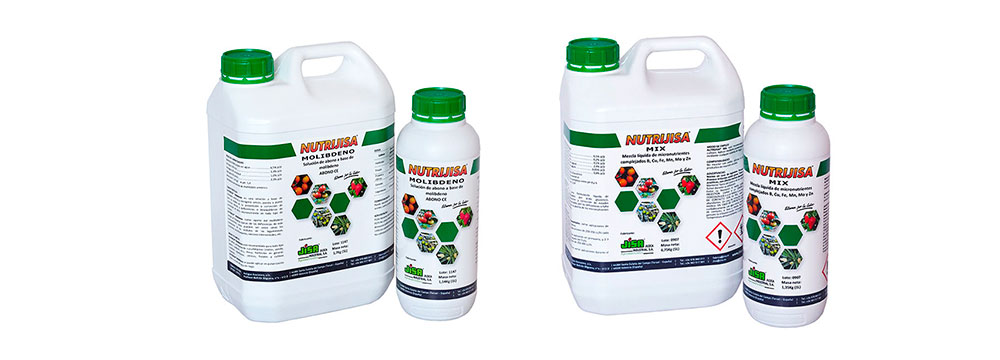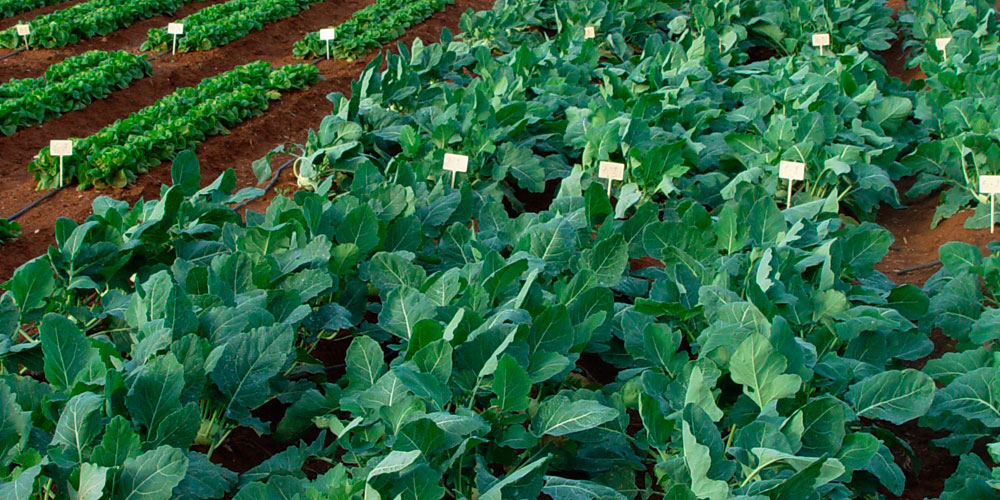Molybdenum is an essential element for a proper development of plants. It’s atomic number 42 as a chemical element and belongs to group 6 of the periodic table, and is identified with the symbol Mo.
Molybdenum in agriculture
Molybdenum in agriculture is necessary in small quantities, although it has great importance, since it’s an essential constituent of the enzymes nitrogenase (biological fixation of nitrogen) and nitrate reductase (reduction of the nitrate ion to the ammonium form).
The contributions of molybdenum at the correct doses with different types of fertilizers, among them, for example, sodium molybdate, ammonium molybdate, molybdenum trioxide and calcium molybdate come to cover the needs of high-yield crops because over time their reserves are depleted.
Molybdenum is absorbed by the plant in the form of molybdate (MoO4-2). As we have advanced, their needs are very low and in general, the roots present higher contents than in leaves, stems and seeds. Altogether, the contents that we can find in plants can vary between 0.1 and 300 ppm on the dry weight, although the normal is 1 to 10 ppm.
Molybdenum in the soil
The molybdenum present in the soil comes naturally from the decomposition of rocks. Its content is usually very low, moving between 2 and 2.5 ppm. Of this quantity, most of it is not available for the plant, only 10% is considered assimilable. Thus, in most soils (obviously excluding the inert ones used in hydroponics), the useful molybdenum does not exceed 0.2 ppm in the soil solution.
What factors influence the availability of molybdenum in the soil?
Among the factors that influence the availability of molybdenum in the soil is the pH. Contrary to what would happen to the trace elements iron, manganese, copper or zinc, molybdenum is more available with higher pH of the dissolution of the ground, as this transform it to the assimilable form (MoO4-2).
The level of presence of iron and aluminium oxides also influence the disposition of molybdenum by the plant, since these compounds strongly adsorb it and even more in case of lower pH.
The content and state of organic matter in the soil also interacts with the amounts of molybdenum in the field because it can provide certain amounts of it. And to mention another factor, there is the effect of phosphorus and sulphur. While the first, in large quantities (phosphates) influences by increasing the absorption of molybdenum, the second, sulphur (excess sulphates) causes the opposite effect, reducing the absorption of molybdenum.

Molybdenum deficiency symptoms
Regardless of the cultivation technique (in the field or in hydroponics), the symptoms of molybdenum deficiency are always correlated with the metabolism (exchange) of nitrogen, generally beginning as a weakening of the green coloration of the adult leaves.
In the case of legumes, the weakening of the coloration usually affects the entire leaf surface. On the other hand, in other plants such as citrus trees, more or less circular yellow spots appear that can become necrotic and even detach, generating holes in the leaves, an anomaly known as the ” yellow spot”. Another group that is quite sensitive to a molybdenum deficiency are crucifers: broccoli, cauliflower, cabbage, etc.
It should be noted that in cared soils and therefore with adequate levels of molybdenum, the deficiency can occur in acidic soils and rarely in alkaline soils.
As for possible cases of molybdenum toxicity in plants, they rarely occur because somewhat high levels are tolerated without problems.
Molybdenum deficiency correctors
JISA Advanced Agro has Nutrijisa molybdenum® in its catalogue of shortage correctors. Its formulation contains a solution based on ammonium molybdate and urea nitrogen, which through its use acts effectively in the prevention and correction of its shortage.
Nutrijisa molybdenum® provides this microelement, correcting those problems derived from its deficiency, such as the colorations of the nodules of legumes, dwarfism, yellowing, internervial necrosis, etc.
Its application for corrections or prevention of molybdenum in vegetables, stone and pip fruit trees, citrus, olive, vineyards, … and ornamentals, usually coincides with the appearance of the first flowers. Although, the preferable thing to establish the right moment and dose is to have the advice of the JISA Advanced Agro technical team.
In addition, add that, Nutrijisa Mix® liquid formula is also in the shortage correctors catalogue, containing micronutrients complexed by gluconic acid, specially studied for the prevention and correction of multiple deficiency states, including molybdenum.
